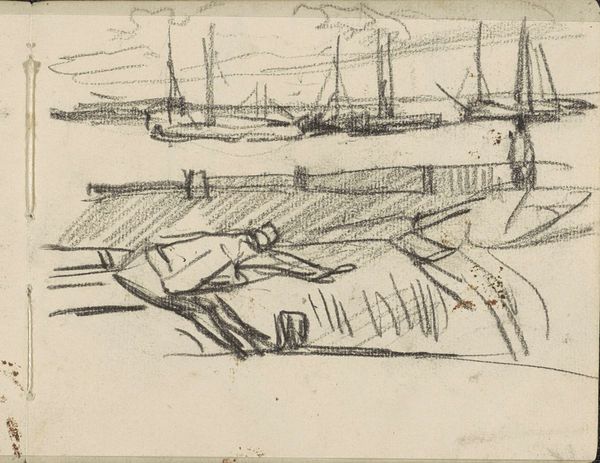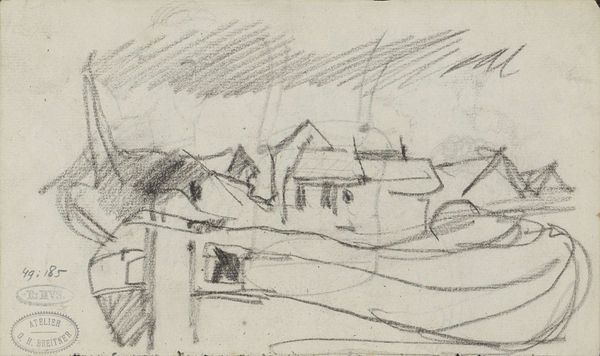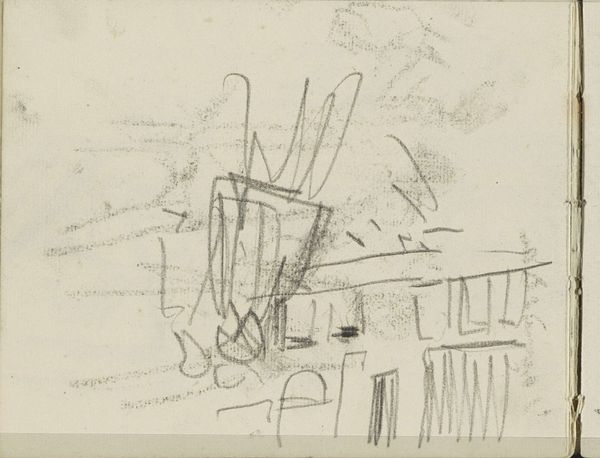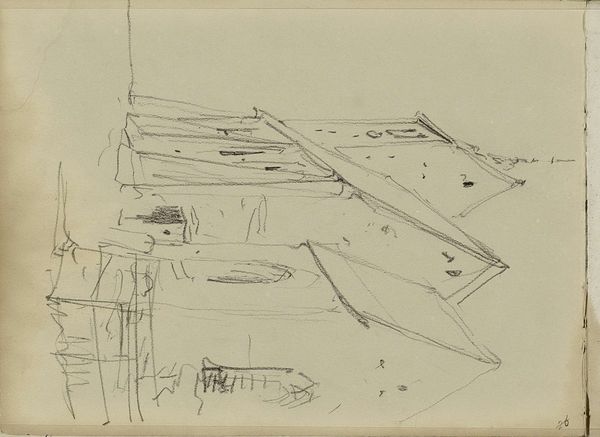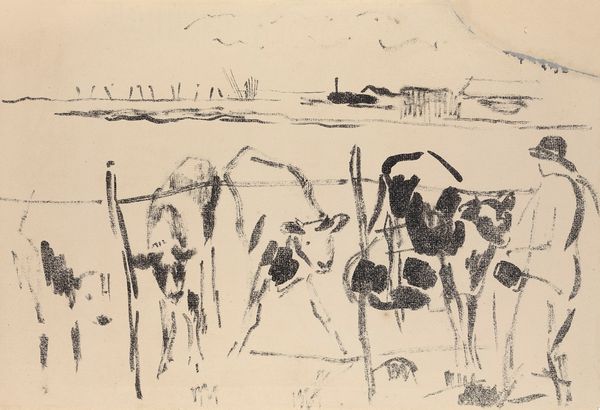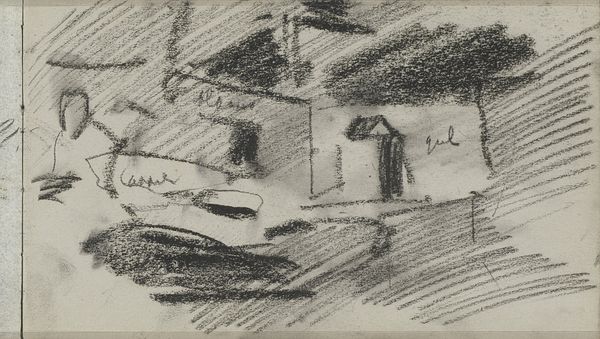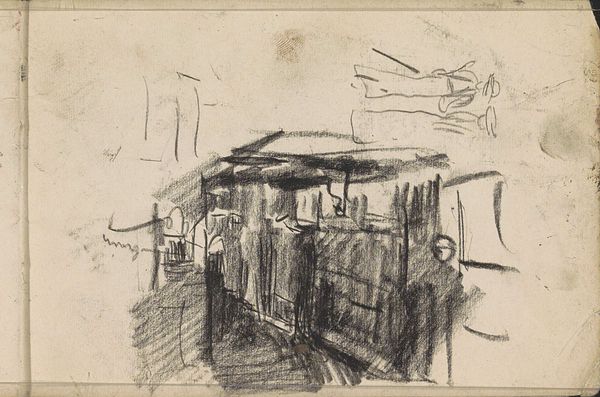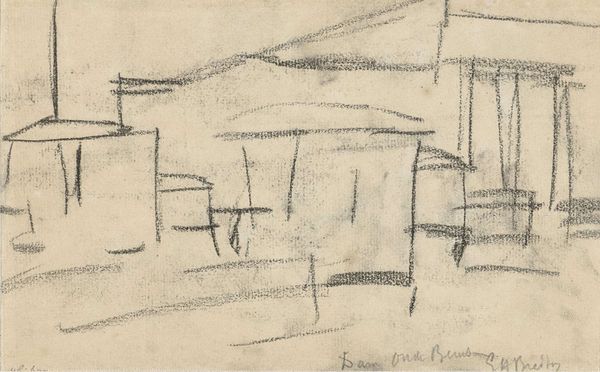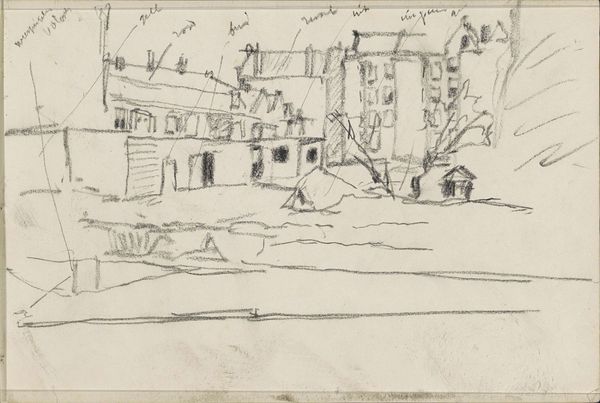
Dimensions: height 127 mm, width 199 mm
Copyright: Rijks Museum: Open Domain
Curator: Here we have a work by George Hendrik Breitner, a pencil drawing from 1895 titled "Landschap, mogelijk met bunkers," which translates to "Landscape, possibly with bunkers." It's part of the Rijksmuseum's collection. Editor: It has such an immediate, unfinished quality. A bleakness too. The almost scribbled lines hint at some stark industrial forms but lack definition and blend with naturalistic ones. Curator: Breitner was known for his interest in depicting modern, urban life and the working class. While famous as one of the group of Amsterdam Impressionists, this work comes across as almost brutally realistic, a visual response perhaps to the militarization of the landscape. Consider also the potential relationship between such fortification and Dutch national identity. Editor: Yes, because from my vantage point, it's also suggestive in the sense that its rawness almost mirrors the disruption of these bunker systems. But these structures become enmeshed with nature and human life—suggesting, almost, they might not even be separate at all. Do you think there’s some commentary embedded about environmental or societal degradation? Curator: It’s fascinating to see how easily we, viewing from our contemporary moment, read ideas about environmental disruption back into a piece from the late 19th century. It’s vital to remember that those social anxieties surrounding large scale building projects were often as much to do with nationalism, rapid social change, class divides, as about any developing sense of a modern ecological consciousness. It is such a fascinating study of this intersection of art, technology and early concepts of nation building. Editor: Perhaps, though for me that interplay really reflects on the complex nature of the artwork—that art doesn't necessarily depict "truth," but can explore a range of perspectives on it. Anyway, this drawing is an excellent glimpse into the intersection of art and politics. Curator: Indeed, seeing these rudimentary beginnings as part of a bigger societal picture opens new doors to understanding visual culture. Editor: Absolutely. There’s such powerful potential locked within early renderings that it almost eclipses any supposed completed work!
Comments
No comments
Be the first to comment and join the conversation on the ultimate creative platform.
